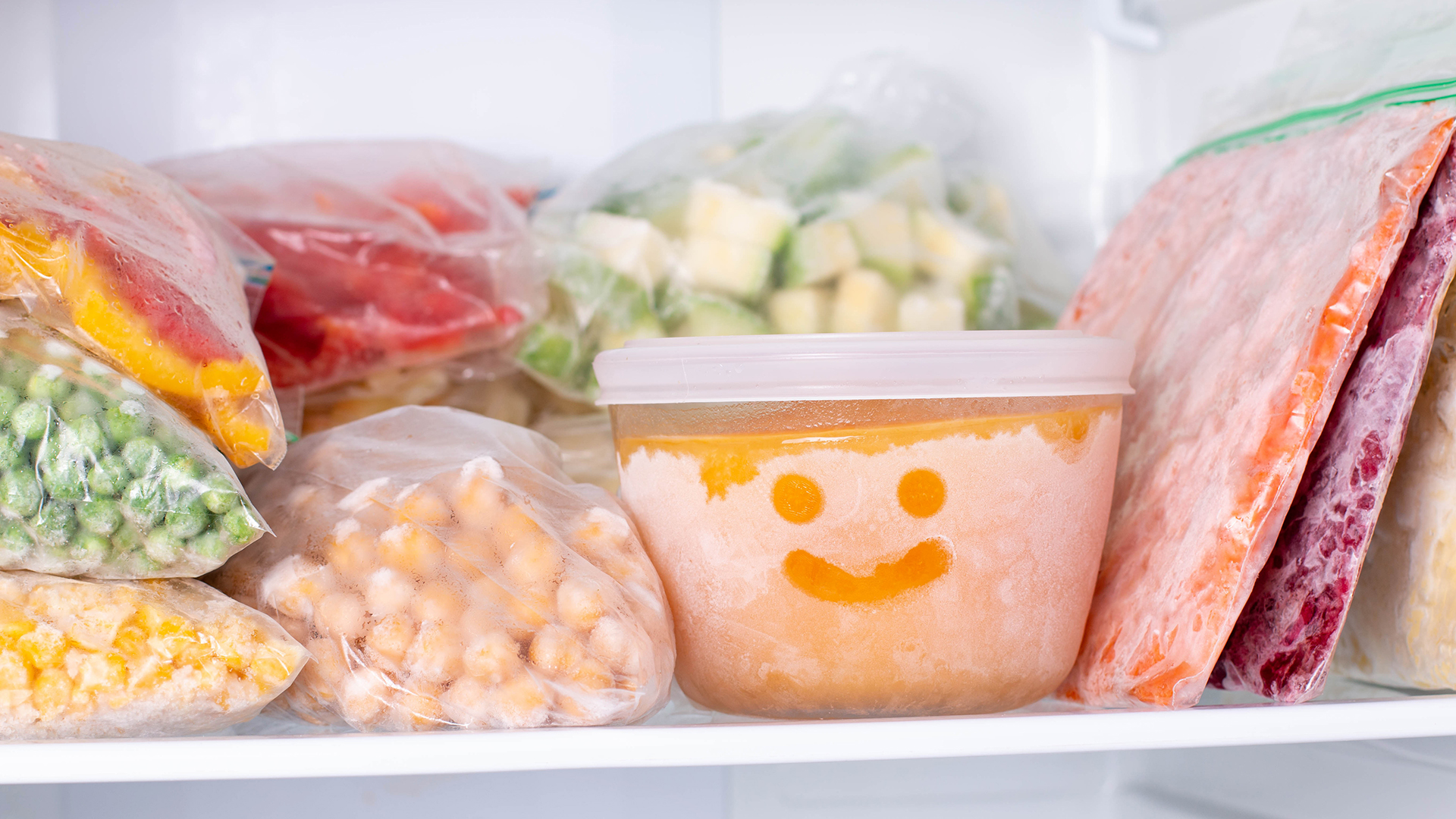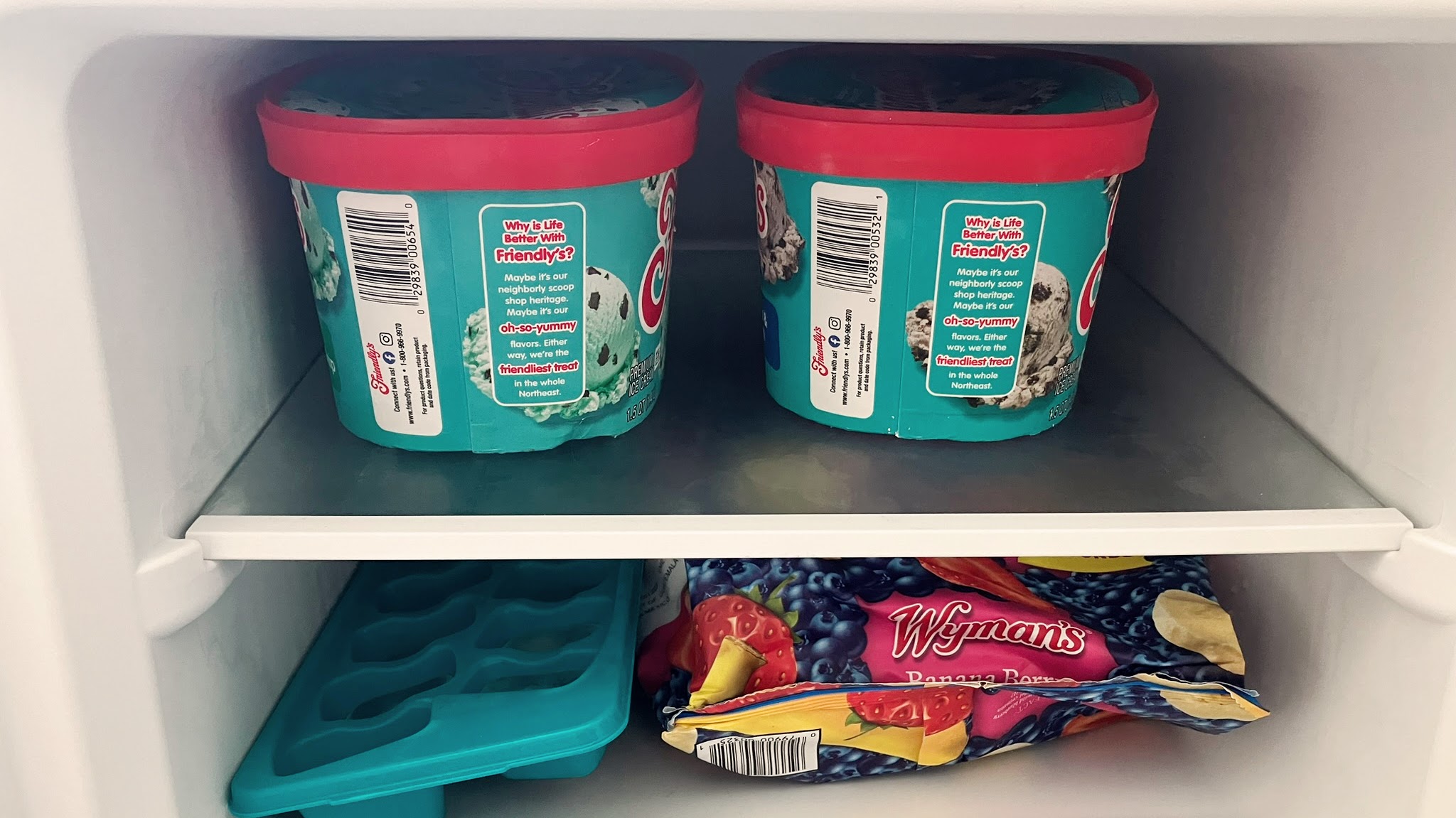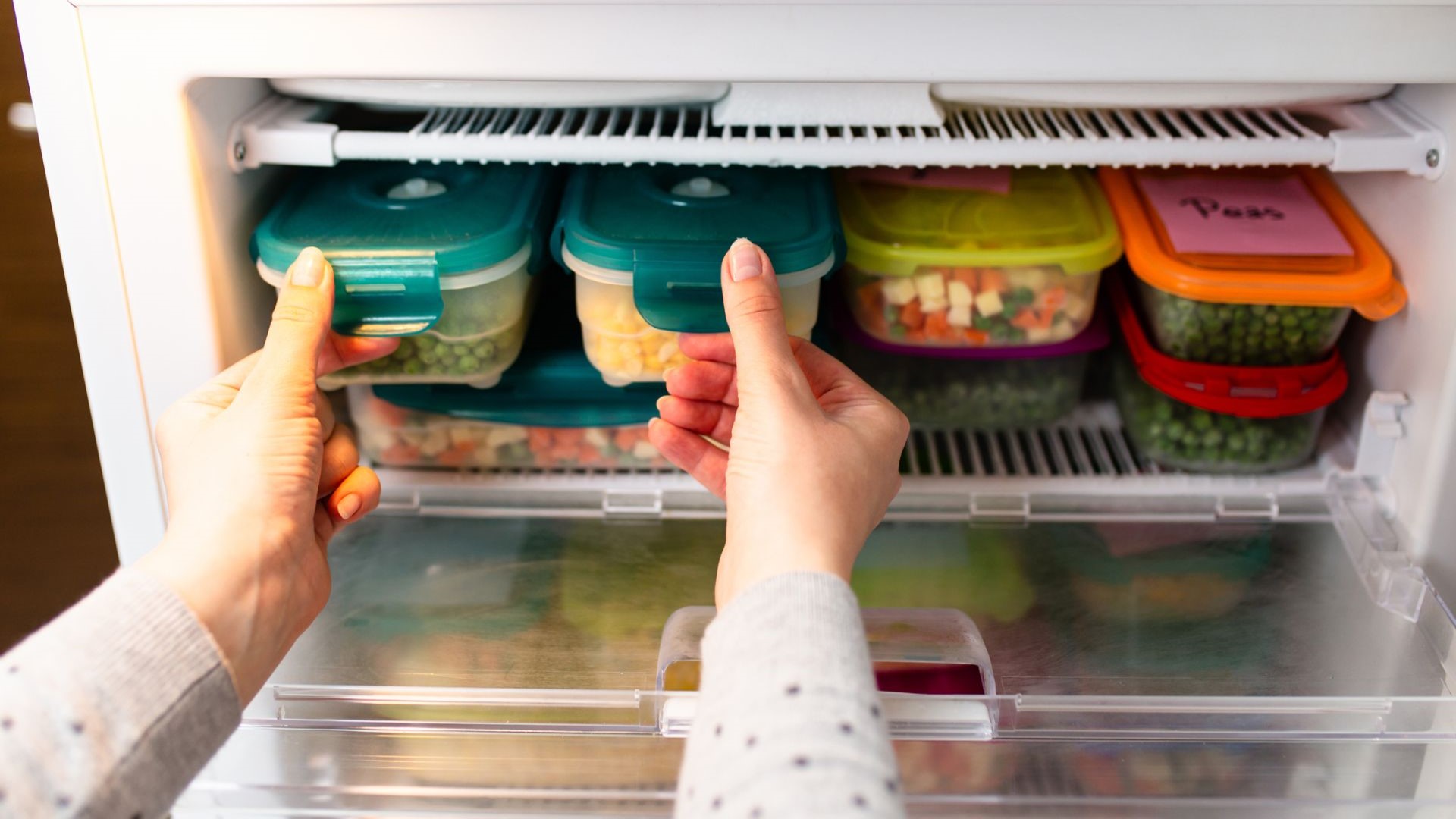
Knowing the right temperature for your freezer can save you from freeze-thawed food and prevent your freezer walls from forming ice. But what temperature should a freezer be, and how do you tell the internal temperature?
Whether it’s a chest or freestanding model, the best freezer must run at the right temperature to keep your frozen items safe. Doing this right can prevent freeze-thaw and keep that steak you’ve saved for a special occasion in top condition.
We’ve already covered what temperature a refrigerator should be, so whether you have a French-door refrigerator or one of the best side-by-side refrigerators, our guidance can keep both your freezer and fridge sections running smoothly.
What temperature should a freezer be?
You should set your freezer to 0°F, which is easy to remember. At this temperature, most bacteria don't grow on frozen food. Most frozen food packaging recommends freezing at this temperature, but check your grocery store for specifics.
It's not ideal if the temperature rises above 0°F, and bacteria grow faster. However, if the temperature drops below zero, your food is still safe, but you'll need to thaw things like turkey for a while. Remember that ice cream that's easy to scoop out of the freezer is too warm!
Keeping your freezer at 0°F (-18°C) is crucial to preserving food quality and safety. The food stays solidly frozen at this temperature, preventing bacteria from growing and preserving its texture, flavor, and nutrition.
If you keep your freezer at 0°F, your food will stay safe for a while. Even though frozen food stays safe indefinitely, its quality may deteriorate due to freezer burn, which happens when it's exposed to air for too long. Keeping your freezer at the right temperature reduces this risk, and the food's taste and texture stay good.
Many freezers come with built-in temperature dials, but they can be inaccurate. Placing a freezer thermometer in the center of the freezer will give you a more accurate reading.
If the temperature is above 0°F, adjust the thermostat. Temperature fluctuations can occur if you constantly open the freezer door or overload it. Ensure enough air circulation to maintain an even temperature throughout the freezer.
It's advisable to monitor the temperature more frequently during warmer months, especially if you're keeping your freezer in an uncooled area like a garage.

How to tell the temperature of your freezer
You can check how well your refrigerator freezes food by looking at the temperature gauge in some refrigerators. In addition, you can use an appliance thermometer to track the temperature inside your freezer, which you can find on Amazon for a really good price. You can also put a thermometer between frozen veggies and fruits and let it sit overnight for an accurate reading.
A freezer that's too cold can increase your electricity bill, but as long as the temperature stays consistent, it won't negatively impact the quality of your food.
Use a Freezer Thermometer: To ensure the temperature is right, it's best to use a freezer thermometer. Put it in the middle of your freezer, away from the walls and door, and leave it there for 5 minutes to get an accurate reading. It keeps warmer air out when the door is opened, so you don't get the influence of that.
Check the Built-in Control Panel: Most modern freezers come with a control panel that shows the current temperature. While this can give you a general idea, you should check the actual temperature with a thermometer, since the temperature displayed may not always reflect the true temperature inside the freezer.
Conduct a Simple Ice Test: If you don't have a thermometer, you can use a container of water. Fill a glass with water and freeze it overnight. When the ice is solid and hard, your freezer is probably right at 0°F (-18°C). If the ice is soft or slushy, it might be too warm.
Remember that frequent opening of the freezer door can affect the internal temperature. If you use your freezer often, it takes a while for it to return to its ideal temperature. You can maintain optimal conditions by regularly monitoring the temperature, especially after adding new stuff.
How long will a freezer stay cold without power?
When your freezer loses power, don't open it too much. When the power is back on, check your freezer thermometer to see how much it's risen since you'll be able to keep the residual cold air inside. If your freezer is full, it'll hold the temperature better.
To be safe, you might end up with a last-minute steak dinner accompanied by your favorite ice cream.
Food safety depends on how long a freezer can keep its cold temperature during a power outage. With a full freezer, you can keep food frozen for 48 hours if the door stays closed. This is because full freezers keep cold air better than empty ones, so the temperature doesn't fluctuate as much.
Due to their design, chest freezers retain their temperature longer than upright models. With fully stocked freezers, the temperature stays colder for longer. In addition to the frozen items acting as thermal mass, the freezer's insulation also plays a role. Well-insulated freezers keep cold air in longer.
During a power outage, keep the door closed as much as possible to ensure your freezer stays cold. Opening the door lets warm air in, which raises the temperature quickly. If you expect a long outage, you might use dry ice. For example, 50 pounds of dry ice can keep an 18-cubic-foot freezer cold for about two days.
Once the power is back on, check the freezer's temperature. If it's been above 0°F (-18°C) for more than two hours, throw away perishables to avoid foodborne illness.

Why does a full freezer stay colder?
Thermal mass is one of the primary reasons. When a freezer is full, frozen items act as a buffer against temperature fluctuations. Each item retains cold air, and when the door is opened, the air escapes. Keeping a lower temperature in a full freezer is easy if you keep a few frozen items around. Because frozen food absorbs heat more effectively than air, which is less dense and warms up quickly, it's particularly effective.
Having a full freezer minimizes air inside. Air isn't as efficient as solid food items at conducting heat. There's less chance for warm air to get into the freezer when it's open when there's less air in there. By reducing air exchange, we keep the internal environment cool, so it doesn't heat up too quickly.
A full freezer is also usually more energy-efficient. Because the frozen stuff keeps the air cold, it takes less energy to maintain a low temperature. As a result of this efficiency, the compressor doesn't have to work as hard to cool the room over time.
Why would a freezer stop working?
Several reasons can cause a freezer to stop working, resulting in inadequate cooling and food spoilage.
Compressor Failure: A failed compressor is one of the most common reasons a freezer stops working. The compressor circulates refrigerant throughout the system, so it won't cool correctly if it doesn't work. The cause could be wear and tear over time or electrical.
Coolant Leaks: The freezer cannot maintain low temperatures if the refrigerant escapes from the system. This usually requires professional repair since recharging the coolant typically does not help.
Defrost System Problems: If the defrost heater fails, frost can build up on the evaporator coils, obstructing airflow and preventing the freezer from cooling properly. Regular maintenance can prevent this.
Door Seal Issues: If the door doesn't close properly or the seal is damaged, you may need to clean or replace it to ensure a tight fit.
Electrical Issues: Finally, electrical problems, like a blown fuse or tripped circuit breaker, can stop a freezer from working. Make sure the power supply is working and the appliance is plugged in properly.







